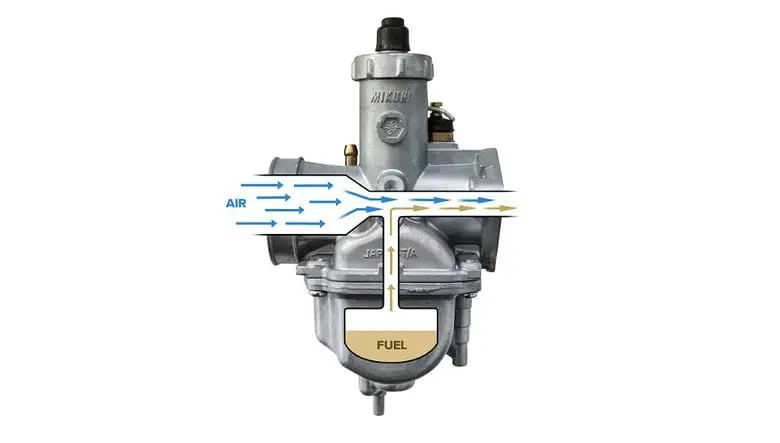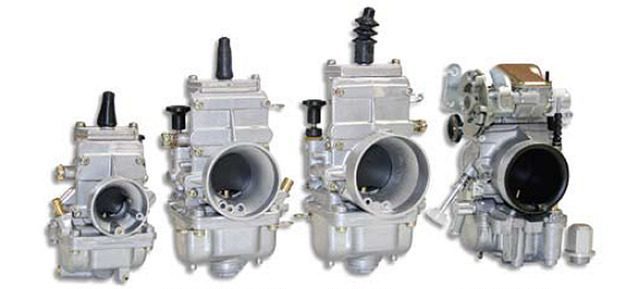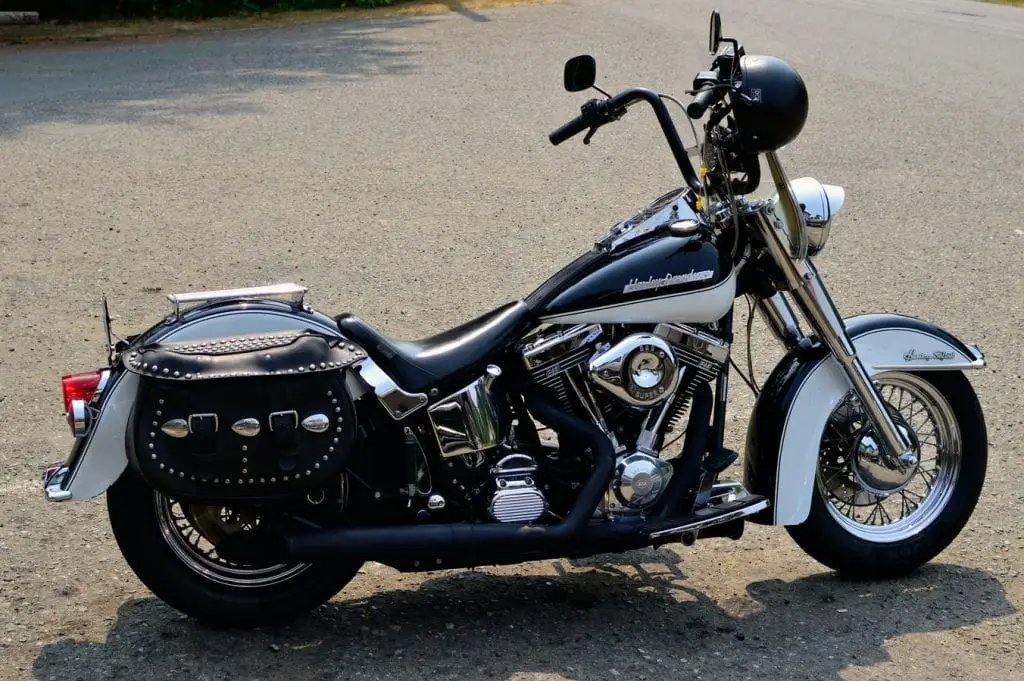I want my bike to go faster. Every bike enthusiast has this in mind at some point but how to achieve that? For guys with classic bikes that still use carburetor, enlarging it sounds like an option. But does it work like that?
Turns out, no. It’s not as simple. A bigger carburetor alone will not make your bike go faster. In most cases, your bike won’t even start or idle roughly with a carburetor that’s too big.
For more power, you should look into a full system performance exhaust and rejetting your carb (not replacing it entirely).
In this article, I will talk in detail about carburetors – how they work and what the hell is rejetting a carb?
How Does a Carburetor Work On a Motorcycle?
A carburetor is a mechanical device used to control the air/fuel mixture in a combustion engine. Most modern bikes have replaced carb with programmable fuel injector – though some new bikes still use carb.
Combustion Engine & Air/Fuel Ratio
Before we go deep into carburetors, you must first understand how combustion engines work.
Majority of motorcycles use combustion engines to power themselves – which means they use a mixture of air and fuel to generate combustion and deliver power.
The air to fuel mixture must be in the perfect ratio (14.7:1) – this way, the combustion is optimal and powerful. Your bikes will have the most power with the best fuel economy.
Air is sucked from the surrounding through an airbox. Whereas fuel comes from the bike’s fuel tank. Depending on how much air is coming in, the correct amount of fuel must be injected – enter the carburetor.
The Magic Of Carburetor
Carburetor operates using the Venturi Principle. Now let me explain to you the detailed science behind it. Just kidding – let’s not waste our time on the details (actually, I just don’t know the science).
But it works like this. A carburetor is connected into the air intake and also the fuel tank. And by design, the air pressure between the air passage and the fuel tank is different.
Pressure in the air passage is lower. And if you don’t already know, air particles always want to move from high pressure areas to low pressure.
Which means, as air passes through the carburetor through the passage, fuel is forcefully sucked in from the fuel tank because of the air pressure difference.
Look at this picture below, if you can’t grasp what I am talking about. Air and fuel are mixed in the carburetor and delivered straight to the combustion chamber for some power.

As air flows through the narrow passage, they create low pressure area that sucks fuel from fuel tank. Image credit to RevZilla
Why Bigger Carb Alone Won’t Make Bike Faster?
If you have somewhat understood how a carburetor works, then you might be thinking – If the carb is bigger, won’t the airflow increase and also the amount of fuel that’s sucked in?
The answer is no, not really. The amount of fuel that’s sucked into the carburetor is controlled by the carburetor jets.
Simply switching to a bigger carb will not mean more fuel injection as well (although it could be, if the carb equips bigger jets)
Installing a bigger carb is simply going to improve the power potential of your bike. You still have other things to worry about like improving air intake, exhaust flows and jets.
For example, say you install a bigger carb. Now your carb can allow more air to pass and it can suck more fuel. Ok cool. But what if your air intake is quite restrictive?
As in, your carb can handle the extra air flow coming in. But not enough air is passing through your air filter because they are too restrictive.
Same goes to exhaust flow. Your carb is now bigger and it can handle more air flow. Ok cool. But what if your exhaust system is severely restrictive?
Exhaust gases generated in the combustion chamber are not leaving quick enough – which means there’s not enough in the combustion for more air / fuel mixture. You will still have a slow bike.
I hope you get why a bigger carb alone won’t make much difference? If not, its ok, I will discuss further below.
What Is Carburetor Jet?
Earlier I mentioned that carburetor jets control the amount of fuel that’s sucked into the carburetor – which means a bigger carb alone won’t always mean more fuel.
Nothing is going to change If you have a bigger carb but still use small jets. The size of a carburetor is usually measured by the diameter of its air intake. So, it’s still possible to have a bigger carb and small jet.

Bigger carbs also have bigger opening to allow more airflow
Back to carburetor jets. Carburetor jets are basically screws that control how much fuel can pass through and get sucked into the carburetor.
Every carburetor has 3 types of jets:
- Idle jet. Controls fuel mixture when your bike is idling
- Pilot jet. Controls fuel mixture up to ¼ throttle
- Main jet Controls the fuel mixture from ¼ throttle to full throttle
Depending on where your problem lies or how do you want to tune your bike, you would replace the correct jets.
Go for bigger jets if you bike is having more air flow (due to performance air filter or exhaust). Go for smaller jets, if your bike is somehow running rich and want to reduce the amount of fuel.

Different sizes of carburetor jets. Pilot jet (top) & Main jet (bottom)
What Happens If Carburetor Is Too Big?
Let’s say you did not read this article beforehand and have installed a bigger carburetor (without any other mods).
Here’s a list of things that will probably happen.
Remember, a bigger carburetor means that the air passage inside it is bigger – which means not much fuel can be pulled into the carburetor at low RPM.
- Bike won’t start.
- Won’t idle properly.
- Lose power at low RPM
Correct Way To Make Bike Faster (Using bigger carburetor)
Now that we know a bigger carb alone is not enough to make a bike go faster, the question becomes what exactly do we need then?
The most effective way to get a bike to go faster is to generate bigger combustion. There are just 2 things you need for this. More air and more fuel.
Full System Exhaust = More Air
There are many options to get more air into a bike – the most effective one being a full system exhaust.
A full system exhaust means replacing the entire exhaust system – beginning from the mid-pipe all the way till the exhaust tip.
This way, you can be sure that exhaust gases can escape from the combustion chamber as quickly as possible – allowing more room for air in the combustion chamber.
The big plus? Your bike is gonna look and sound sexy as well.

Full system exhaust
Carburetor Rejetting = More Fuel
Once you have more airflow coming into the bike, then the next step is to get more fuel intake using bigger carburetor jets.
You don’t necessarily have to change the whole carburetor – just changing the jets is enough.
Keep in mind that you still need the right sized jets (not just bigger). This way, you will get the optional air/fuel ratio and powerful combustion.
Again, carburetors are only used for older classic bikes. All these theories about air and fuel ratio also apply to modern bikes that use fuel injector.
However, instead rejetting, bikes with fuel injectors can simply reprogram them to inject more fuel. More about this topic over here (if you are interested to learn more)
Do You Have To Tune Motorcycle After Installing Exhaust?

